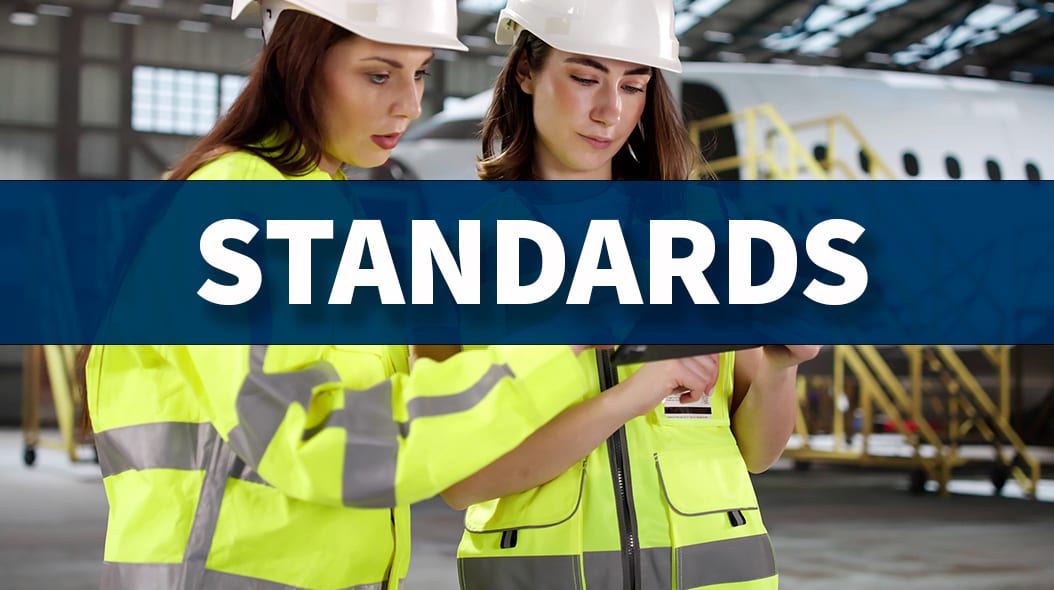xxxxxx xx
xxxxxxxxxx
Inspection
aerospace
aerospace
H2 Deck By Bold Name
h2 xxxxxx
H1 xxxxxx
h2 xxxxx

We’ve seen firsthand how targeted inspections can prevent multimillion-dollar losses and protect human lives. By Colin H. Cunningham
Building Trust: The Role of QA/QC and Specialized Inspections in High-Stakes Manufacturing
As the aerospace, automotive, and medical device industries rapidly evolve—driven by innovation, automation, and ever-tightening regulatory frameworks—the standards for safety, performance, and traceability have never been more exacting. In these high-stakes sectors, quality assurance (QA), quality control (QC), and specialized inspections are not just boxes to check; they are foundational pillars of operational excellence and brand reputation.
Quality in manufacturing is no longer a reactive function performed at the end of the production line. It has evolved into an integrated discipline, beginning at the earliest stages of product design and continuing through the lifecycle of a component or system. In this environment, QA/QC functions ensure not only that parts and processes meet specifications, but that they anticipate failure modes, mitigate supply chain variability, and drive continuous improvement.
Defining the Framework: QA, QC, and Specialized Inspections
In manufacturing, QA refers to the system-wide protocols that proactively prevent defects. These include:
- Design validation and Failure Mode and Effects Analysis (FMEA)
- Supplier qualification and ongoing audits
- Calibration and preventive maintenance of inspection equipment
- Documented procedures for critical-to-quality processes
On the other hand, QC encompasses the real-time inspections and measurements that occur during production. It includes:
- Dimensional inspections using coordinate measuring machines (CMMs)
- Process capability studies and Statistical Process Control (SPC)
- Visual inspections under magnification
- Functional testing against performance benchmarks
Specialized Inspections represent an added layer of oversight governed by industry-specific certifications such as:
- AS9100 for aerospace manufacturing
- IATF 16949 for automotive production
- ISO 13485 for medical device fabrication
These inspections often involve third-party verification at critical control points, and in many cases, they are mandated by original equipment manufacturers (OEMs), regulatory bodies, or global market access requirements.
The Risks of Inadequate Quality Oversight
In industries where the margin for error is measured in microns—or micro milliseconds—the consequences of poor quality can be catastrophic:
- Aerospace: A microscopic surface anomaly on a turbine blade, if undetected, can lead to fatigue failure, in-flight shutdown, or even catastrophic incidents. An overlooked defect in a structural fastener could compromise the entire airframe integrity.
- Automotive: Improper torque values or inconsistent weld penetration in crash-critical structures can result in field failures, warranty claims, or mass recalls affecting tens of thousands of vehicles. The Takata airbag recall, which affected over 67 million airbags, underscores the long-term impact of QA lapses.
- Medical Devices: Biocompatibility oversights, contamination in sterile packaging, or dimensional inaccuracies in implantable components can risk patient lives and trigger product bans by authorities such as the FDA or international notified bodies.
The financial implications are equally severe—ranging from lost contracts to liability claims, damaged brand equity, and regulatory fines.
Industry Trends Shaping QA/QC in Manufacturing
The landscape of quality oversight is shifting with technological and regulatory advancements:
Digital Twins and Predictive Analytics
Manufacturers are using digital twins—virtual models of physical products—to simulate performance under various conditions, enabling early detection of design flaws and process inefficiencies. Predictive analytics, driven by real-time data and machine learning, allows for proactive maintenance and deviation alerts before defects occur.
Regulatory Tightening and Traceability Demands
Regulatory agencies now require detailed records of every part’s origin, composition, and inspection history. Serialization and block chain technologies are being deployed to ensure immutable traceability, particularly in medical and aerospace sectors.
Advanced Materials and Additive Manufacturing
The rise of composites, lightweight alloys, and 3D-printed components presents new challenges for inspection. Non-traditional geometries and internal features necessitate advanced methods such as computed tomography scanning and microstructural analysis.
Globalized Supply Chains
Multi-country production introduces variability in standards, materials, and process consistency. QA/QC systems must now account for supplier risk mapping, multilingual compliance documentation, and harmonized inspection criteria across borders.
Special Inspections: Ensuring Compliance in Critical Systems
Specialized inspections validate integrity in applications where failure is not an option. Examples include:
- Aerospace: X-ray and ultrasonic inspection of welds in engine mounts and fuselage assemblies ensures structural integrity where manual visual inspection falls short. Fluorescent penetrant inspection detects hairline cracks invisible to the naked eye.
- Automotive: Robotic-welded chassis components undergo dimensional verification using laser scanning and torque verification to prevent latent failures in the field. Suspension parts are subjected to fatigue testing to simulate long-term use.
- Medical Devices: Implantable devices must be manufactured in ISO Class 7 or cleaner cleanrooms. These facilities undergo sterility testing, particle monitoring, and bioburden validation. Material Identification ensures that alloy composition is precisely what was prescribed.
These inspections are typically conducted by certified inspectors trained in ASTM, AWS, ASNT, or ISO methodologies and supported by digitally traceable documentation.
Real-World Impact: Inspection-Driven Outcomes
At Bureau Veritas, we’ve seen firsthand how targeted inspections can prevent multimillion-dollar losses and protect human lives.
- In one case, a deviation in aerospace engine housing dimensions was caught during a final dimensional check. Had it gone unnoticed, it would have led to a $2 million recall and fleet grounding.
- A major automotive supplier avoided a field failure incident by identifying a torque calibration discrepancy in its assembly line. Over 10,000 units were re-verified before shipment, preserving their client’s trust and brand image.
- A medical device client passed a surprise FDA audit with zero observations due to their robust QA/QC documentation system—developed collaboratively with us.
Best Practices for Integrating QA/QC in Manufacturing
Manufacturers seeking to improve their quality posture should consider the following:
Establish a Cross-Functional Quality Plan
Involve design, production, procurement, and QA teams from project inception. Use PFMEAs to identify risk points and plan mitigation strategies.
Validate Equipment and Environment
Calibration, tool qualification, and environmental control are essential, particularly in cleanrooms, CNC operations, and CMM labs.
Use Certified Inspectors and Standards
Ensure all personnel involved in inspections are certified to relevant standards. Align inspection protocols with industry norms (e.g., ASTM, ASME, ISO).
Implement Digital QA/QC Systems
Paperless inspection reports, real-time dashboards, and cloud-based quality platforms improve data accessibility, reduce human error, and allow for trend analysis.
Create an Audit-Ready Documentation Framework
Maintain organized, version-controlled documentation of all procedures, training records, inspections, and non-conformance reports. This ensures audit readiness and accelerates product approvals.
Building a Culture of Precision and Compliance
A true culture of quality does not reside solely in the QA department—it is embedded in the mindset of every engineer, operator, and supplier. Companies can work with third party organizations to instill this mindset through:
- Comprehensive training programs on standards and root cause analysis
- Supplier development initiatives
- Gap assessments and internal audits to identify improvement opportunities
- KPI dashboards to measure quality in real time
By making quality visible and shared, organizations can elevate not only their products but their entire team’s performance. Organizations can build a culture of quality by integrating training, audits, and inspection protocols that elevate both product and team performance.
Looking Ahead: Quality in the Age of Smart Manufacturing
Even as inspection becomes more digitized, the fundamentals remain: clear standards, trained inspectors, and unbiased verification.
As the Fourth Industrial Revolution reshapes manufacturing, the fundamentals of QA/QC remain unchanged: objective standards, trained professionals, and data-backed decisions.
Emerging technologies such as AI-driven defect detection, augmented reality-assisted inspections, and digital inspection twins will augment human judgment—but not replace it. In the era of smart manufacturing, precision and accountability will still depend on human expertise.
Conclusion: Quality as a Competitive Advantage
In aerospace, automotive, and medical sectors, quality is more than compliance to a regulatory requirement—it is a strategic differentiator. By embedding precision and accountability into every layer of operations, product, process, and supplier and in doing so manufactures not only reduce risk but also gain trust.

